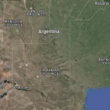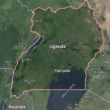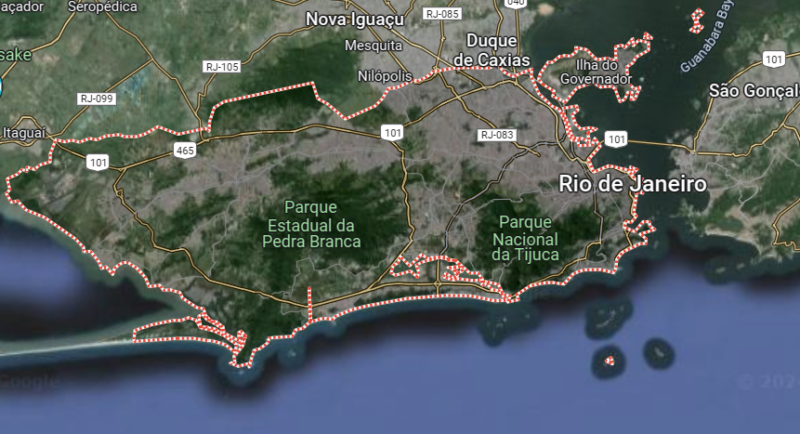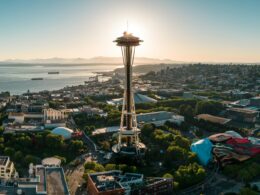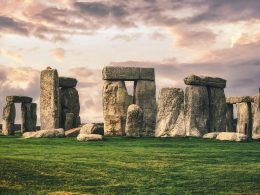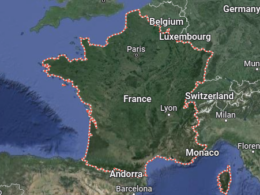Guanabara Bay is one of the largest bays in the world by volume.
The Christ the Redeemer statue was completed in 1931 and is 98 feet tall, with a 26-meter pedestal.
Renowned Brazilian writer Jorge Amado was born in Itabuna, Bahia, but lived much of his life in Rio.
Botafogo Beach has a panoramic view of Sugarloaf Mountain, which is one of the most iconic sights in Rio.
Rio’s Carnival is the world’s largest carnival and attracts millions of tourists every year.
The Selarón Steps are a famous mosaic staircase created by Chilean-born artist Jorge Selarón.
The name “Sugarloaf” comes from its resemblance to the traditional shape of sugarloafs used in the 16th century.
Copacabana Beach is famous for its 4-kilometer stretch of sand and nightlife.
The Tijuca Forest is one of the largest urban rainforests in the world.
The Maracanã Stadium is one of the largest football stadiums in the world with a capacity of over 78,000.
The Lapa Arches are a historical aqueduct built in the 18th century.
Some of Rio’s favelas, like Rocinha, are among the largest in South America.
Pedra da Gávea is a large rock formation with a peak that’s 842 meters high.
Samba music originated in Rio de Janeiro and is integral to the city’s culture.
The cable car ride to the top of Sugarloaf Mountain offers stunning views of the city.
Established in 1808, the Rio de Janeiro Botanical Garden is one of the largest and most important botanical gardens in Brazil.
This futuristic museum focuses on themes of sustainability and the future of humanity.
The Santa Teresa neighborhood is known for its bohemian vibe and colonial architecture.
The Botafogo neighborhood is named after the “Botafogo” shipyard where ships were built in the 19th century.
Ipanema Beach is famous for its beautiful people and the song “The Girl from Ipanema.”
Parque Lage is a public park that features a historic mansion and is a popular spot for art and nature lovers.
Flamengo Park is one of the most popular spots for locals to jog and relax.
The Copacabana Palace is a historic luxury hotel that has hosted numerous celebrities.
The skyline of Rio de Janeiro features a mix of modern skyscrapers and colonial architecture.
Niterói is a neighboring city across Guanabara Bay, connected by the Rio-Niterói Bridge.
Rio’s samba schools are responsible for the elaborate parades during Carnival.
Brazilian barbecue, or churrasco, is a popular dining option in Rio.
This museum is housed in a striking building designed by Oscar Niemeyer.
The Rodrigo de Freitas Lagoon is a popular spot for rowing and water sports.
The cable car ride to Sugarloaf Mountain was first installed in 1912.
The fort, now a museum, was built to protect Rio’s coastline.
Theatro Municipal is one of the most beautiful theaters in the world, completed in 1909.
The base station of the Sugarloaf cable car is located here.
Maracatu is a cultural tradition from Pernambuco, but its influence can be seen in Rio’s Carnival.
The beach is divided into segments by the Arpoador rock, popular for surfing.
The Guanabara Palace is the official residence of the Governor of Rio de Janeiro.
The City of God neighborhood was the setting for a famous film and has a rich cultural heritage.
The Museum of Tomorrow focuses on themes of sustainability and the future of humanity.
Copacabana Fort is now a military museum and offers great views of the beach.
The neighbourhood of Lapa is known for its vibrant nightlife and historic arches.
The Maracanã Stadium was renovated for the 2014 FIFA World Cup.
Rio’s Carnival samba schools spend the entire year preparing for the event.
The Museum of Modern Art (MAM) in Rio is known for its contemporary art collections.
The Cathedral of Saint Sebastian, or Catedral Metropolitana, is a modern architectural marvel.
The Rio de Janeiro Botanical Garden features over 6,500 species of plants.
The Pedra Bonita is a popular site for hang gliding and paragliding.
The Sambadrome was designed by Oscar Niemeyer specifically for Carnival parades.
The district of Santa Teresa is famous for its narrow streets and colonial mansions.
The São Bento Monastery is a significant historical site in Rio.
Rio’s coastline is dotted with over 30 beaches, each with its unique character.
The Museum of Image and Sound (MIS) showcases Brazil’s cultural heritage in audio-visual form.
The Maracanã Stadium hosted the final match of the 2014 FIFA World Cup.
The sugarloaf cable car system was one of the first in the world to be installed.
The Parque Nacional da Tijuca is a massive urban rainforest area.
The Museu Histórico Nacional (National Historical Museum) is housed in a former colonial palace.
The Ilha Grande is a tropical island near Rio known for its lush landscapes and clear waters.
The Leme Beach is known for its scenic views and proximity to Sugarloaf Mountain.
The Museum of Tomorrow’s architecture is inspired by marine life forms.
Rio’s skyline includes many modernist buildings, a legacy of Oscar Niemeyer’s work.
The Pedra do Sal is famous for its samba music sessions.
The Ilha Fiscal, a historic island in Guanabara Bay, is known for its neo-Gothic palace.
The Praça Mauá area has been revitalized with museums and cultural spaces.
The Rio de Janeiro Carnival includes various smaller parades and events leading up to the main event.
The São Conrado beach is famous for its hang gliding takeoff points.
The Sambadrome can accommodate over 70,000 spectators during Carnival.
The Jardim Botânico is home to one of the world’s largest collections of orchids.
The Museu Nacional de Belas Artes (National Museum of Fine Arts) houses a significant collection of Brazilian art.
The area around Copacabana Beach was once a major center for sugarcane production.
The Flamengo district has one of the city’s most famous parks, the Flamengo Park.
The Ilha do Governador is a neighborhood known for its beaches and colonial-era forts.
The Museu da Chácara do Céu features works by famous Brazilian and international artists.
The Confeitaria Colombo is a historic café known for its exquisite pastries and décor.
The Roda de Samba at the Fundição Progresso is a popular weekly event in Rio.
The Pedra da Gávea is said to be the largest outdoor climbing wall in the world.
The Forte de Copacabana is a historic military fort now housing a museum.
The Rio de Janeiro Cathedral’s design is inspired by the Mayan pyramids.
The Parque Lage was once a coffee plantation and later became a cultural center.
The Palácio do Catete is now a museum dedicated to Brazil’s political history.
The Museum of Image and Sound is a pioneer in audio-visual collections in Brazil.
The Casa França-Brasil is a cultural center housed in a former customs house.
The city of Rio de Janeiro was the capital of Brazil until 1960.
The Museum of Contemporary Art in Niterói was designed by Oscar Niemeyer and overlooks the bay.
The Rocinha favela is one of the largest urban slums in Latin America.
The Rio Scenarium is one of the city’s most famous samba venues, located in a restored mansion.
The Ilha de Paquetá is a car-free island known for its tranquility and natural beauty.
The Rio de Janeiro Botanical Garden was founded by Emperor Dom João VI in 1808.
The Museu do Amanhã’s design is inspired by marine life forms and features interactive exhibits.
The Maracanã Stadium’s capacity was increased for the 1950 World Cup.
The Flamengo Park was designed by landscape architect Burle Marx and features extensive green spaces.
The city’s carnival is recognized by UNESCO as an Intangible Cultural Heritage of Humanity.
The Santa Teresa neighborhood’s streets are lined with charming colonial houses and art studios.
The Ilha do Governador’s history includes its role as a military outpost and sugar plantation.
The Palácio Guanabara is the official residence of the Governor of Rio de Janeiro and is located in a historic building.
The city’s port was once one of the busiest in the world for the export of coffee and sugar.
The Ilha de Paquetá was once a quarantine station for ships.
The Parque Nacional da Tijuca is home to the world’s largest urban rainforest and is a popular hiking spot.
The Museu Histórico Nacional was once the residence of Brazil’s emperors.
The area around Copacabana Beach is known for its vibrant nightlife and beachside parties.
The Museu Nacional de Belas Artes houses over 16,000 works of art.
The Pedra do Sal is a historic site known for its African heritage and samba music.
The Rio de Janeiro Cathedral is the largest Catholic church in Brazil.
The Flamengo neighborhood is known for its cultural and historical significance.
The Church of Our Lady of the Candelaria is one of the oldest churches in Rio, dating back to 1609.
The city’s botanical garden is home to a large collection of orchids and other tropical plants.
The Ilha Fiscal is a historic site known for its architectural beauty and cultural significance.
The Rio Scenarium is known for its eclectic décor and live samba music.
The Casa França-Brasil was once a customs house and is now a cultural center.
The district of Botafogo is known for its scenic views and cultural heritage.
The city of Rio de Janeiro was the site of the first European settlement in Brazil.
The Museu do Amanhã focuses on sustainability and the future of humanity through interactive exhibits.
**Please note that this post may contain affiliate links. When booking through one of our links, we earn a small kickback at no extra cost to you and it’s a big help to keep the site up and running.



